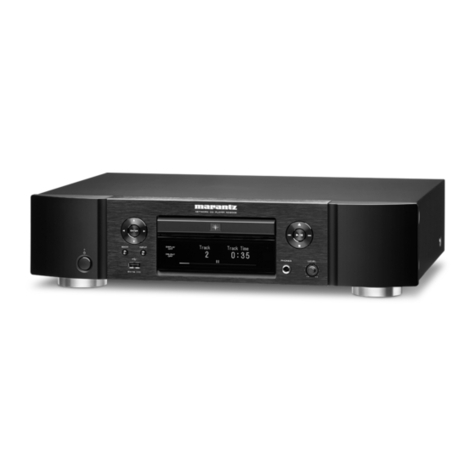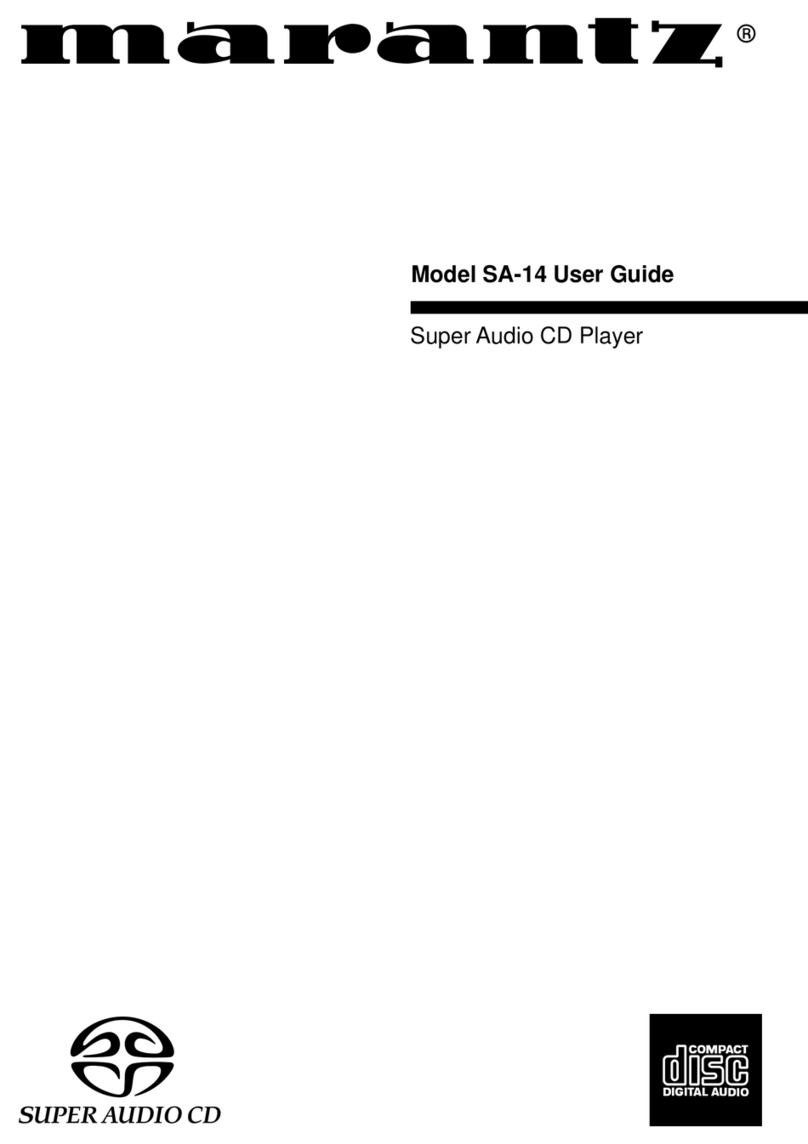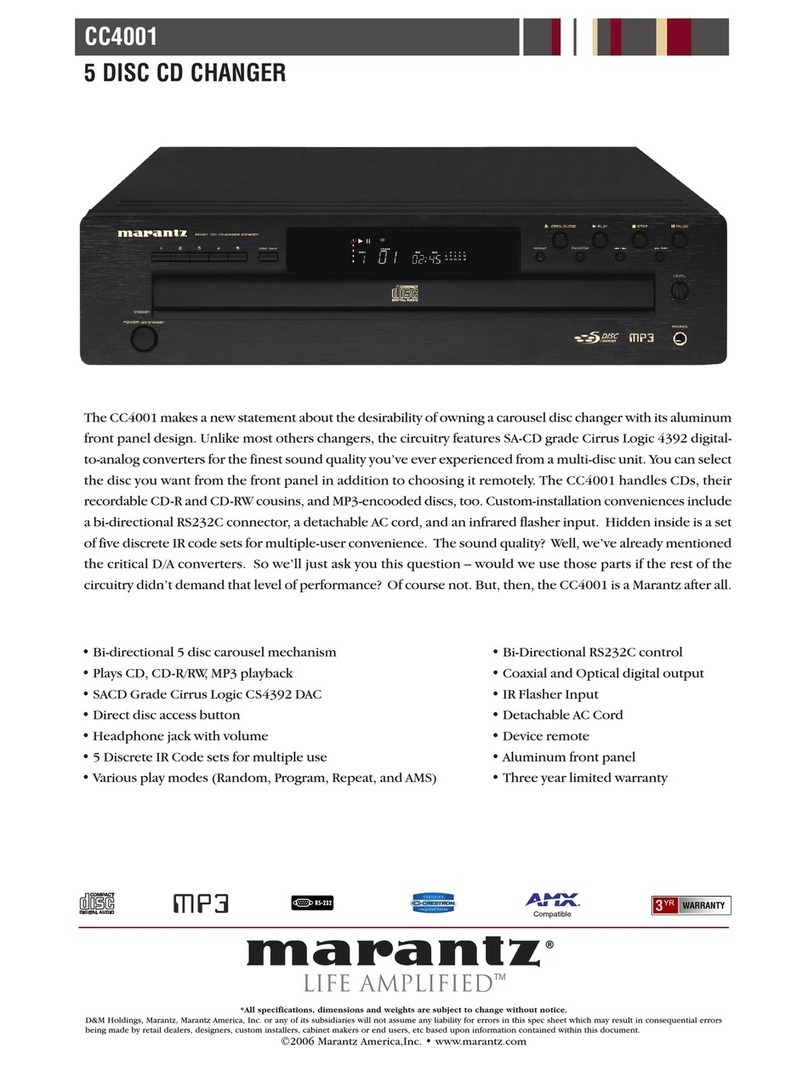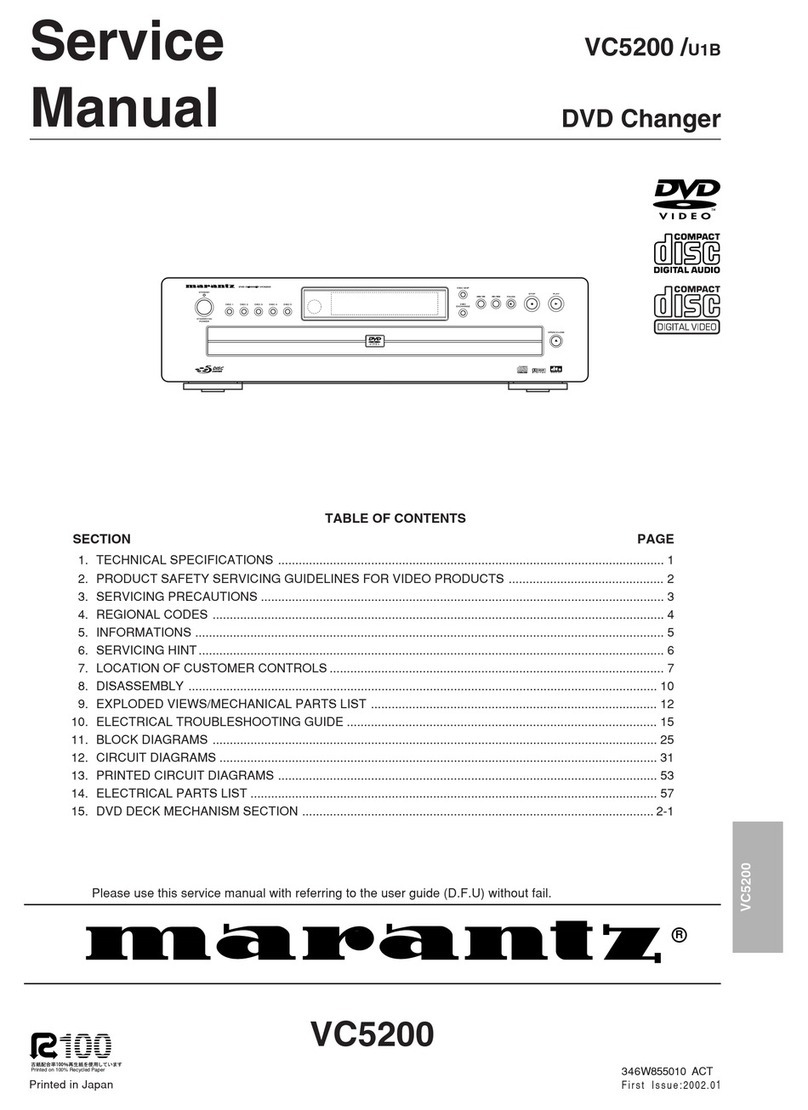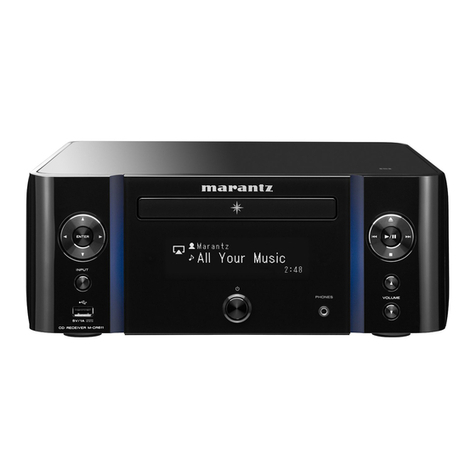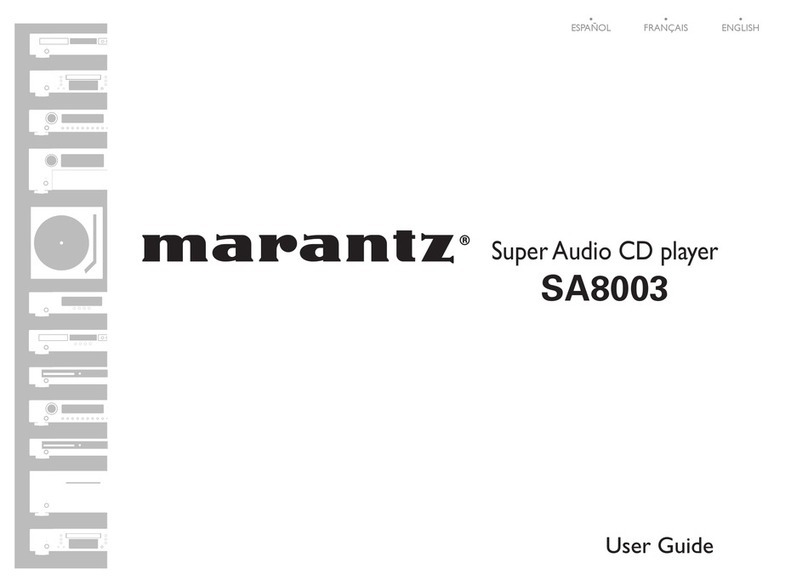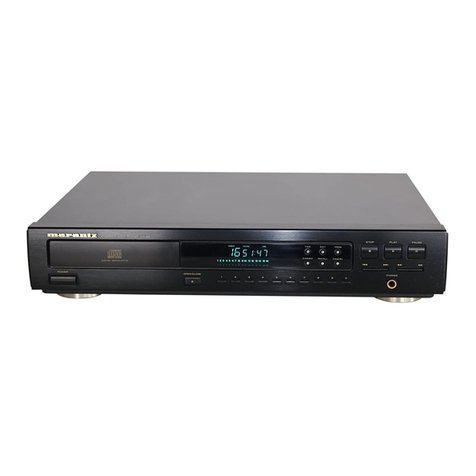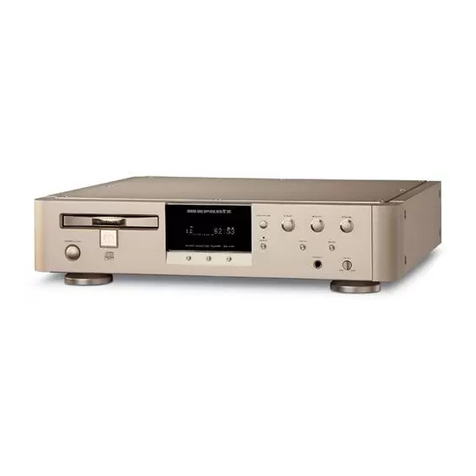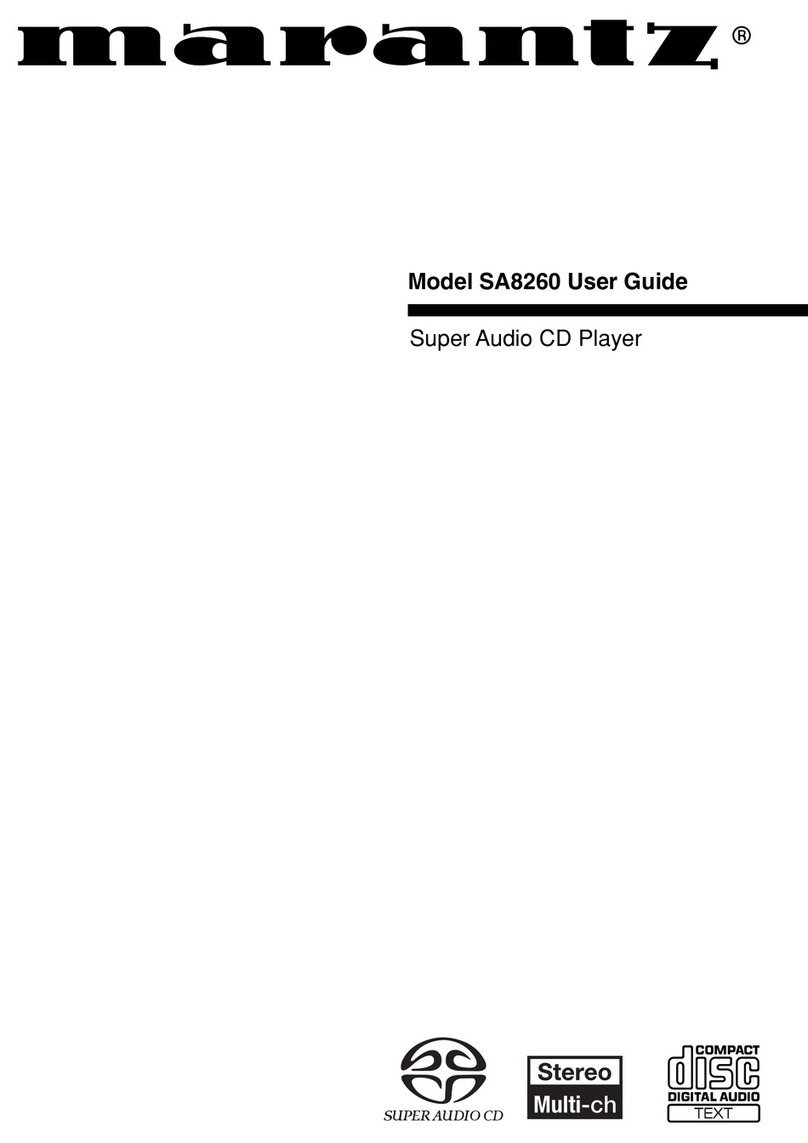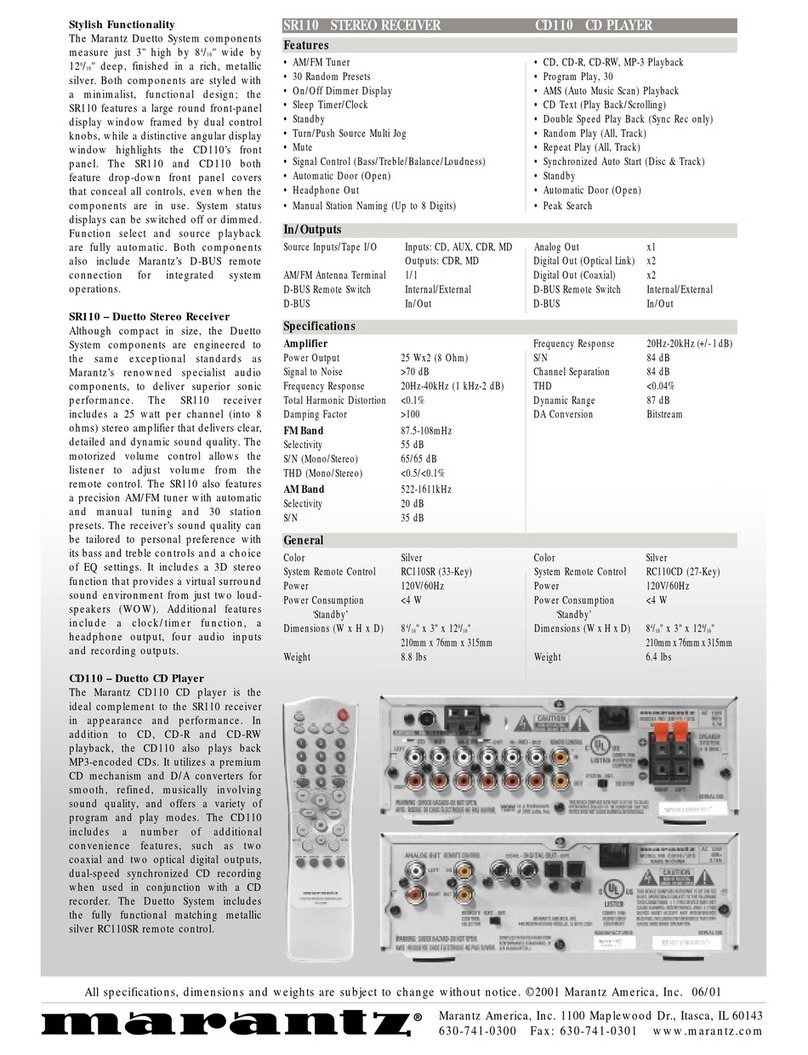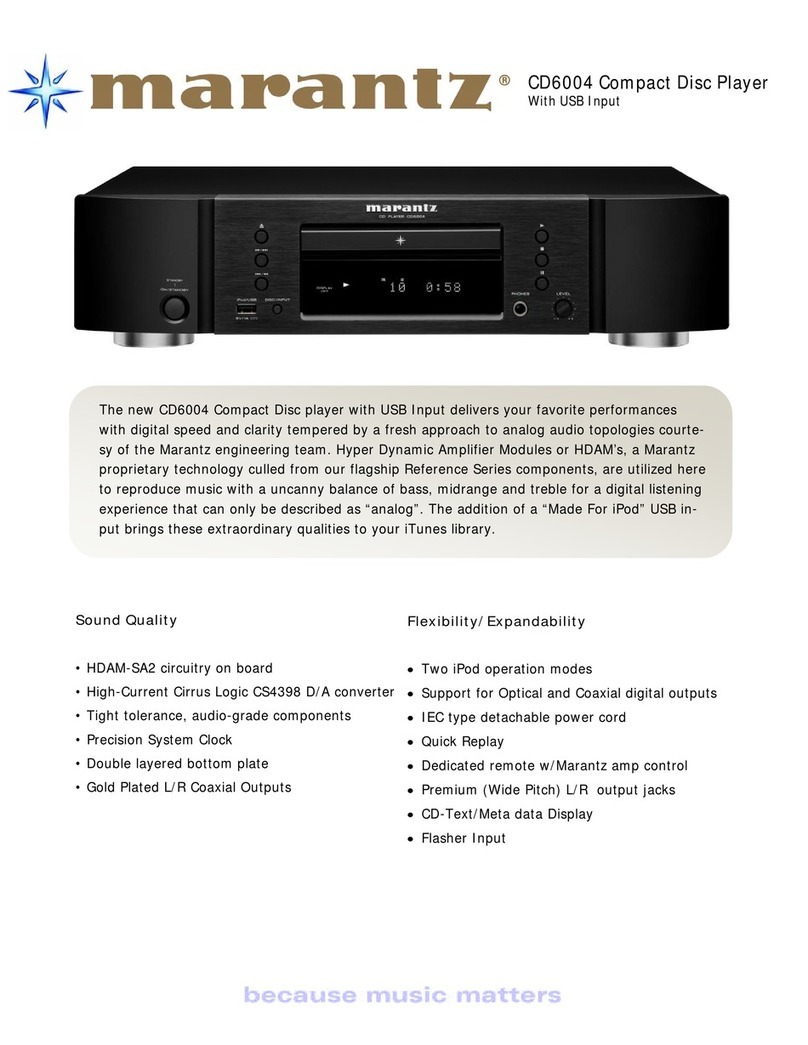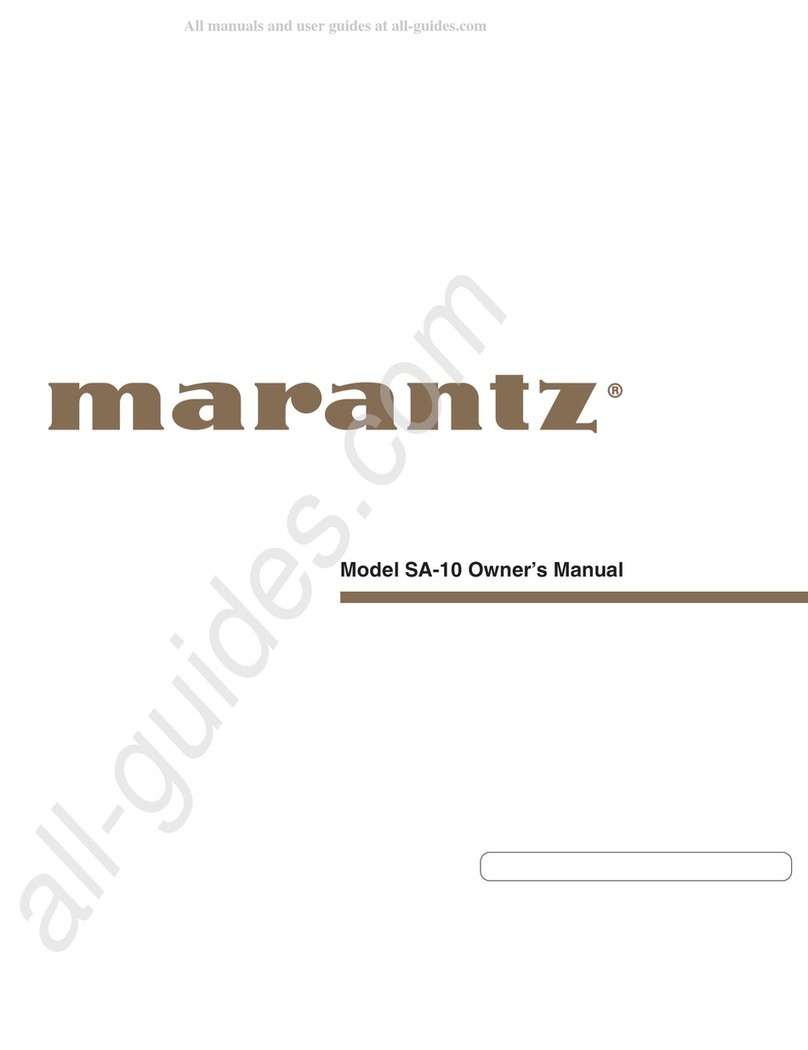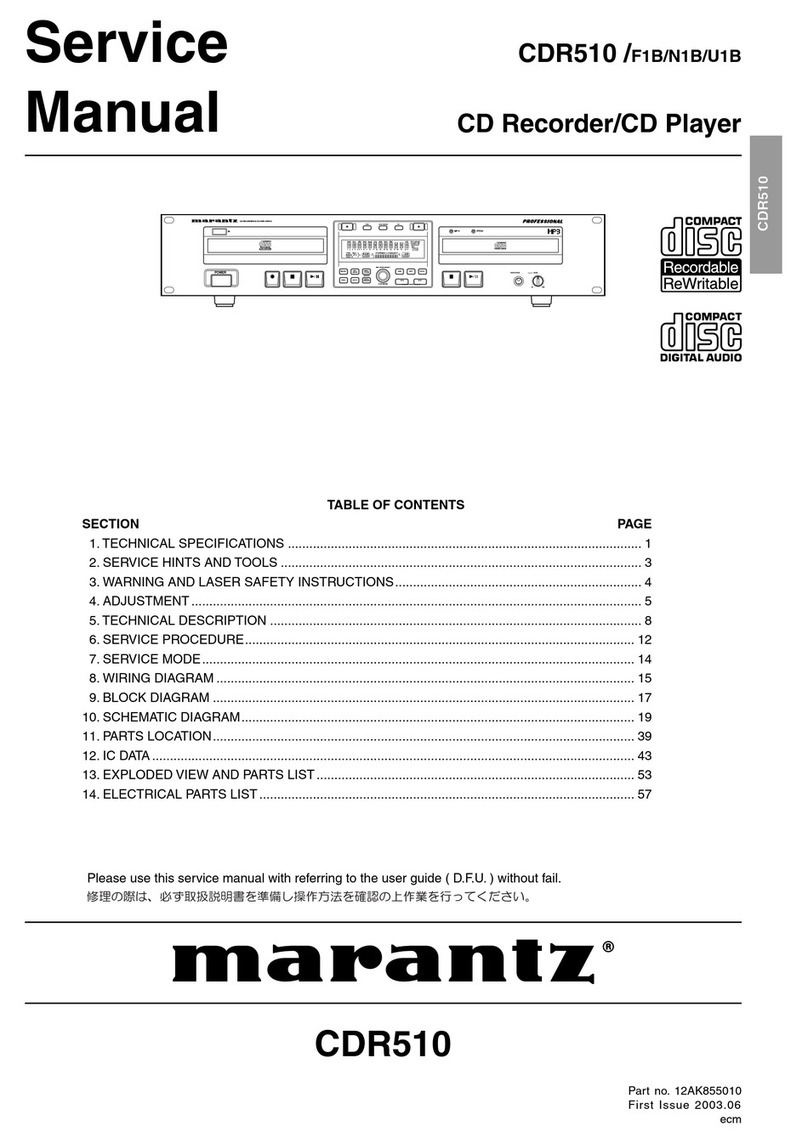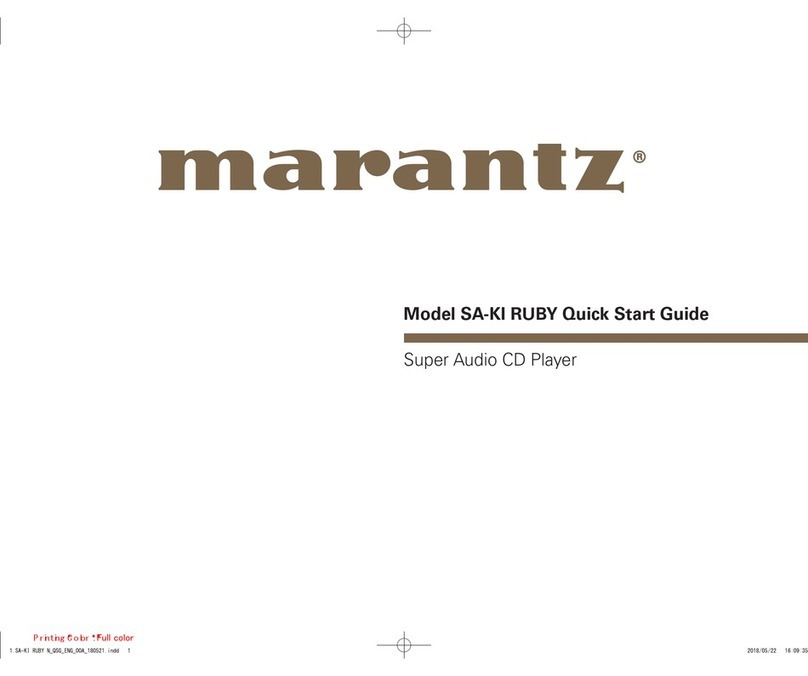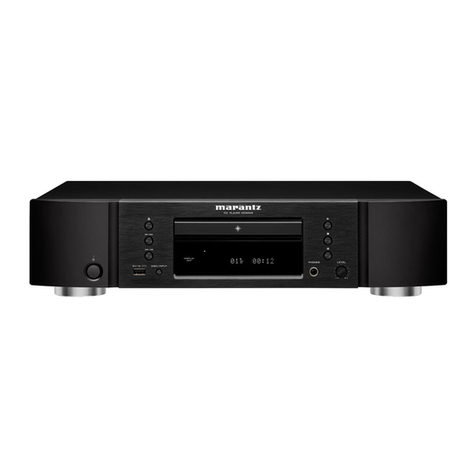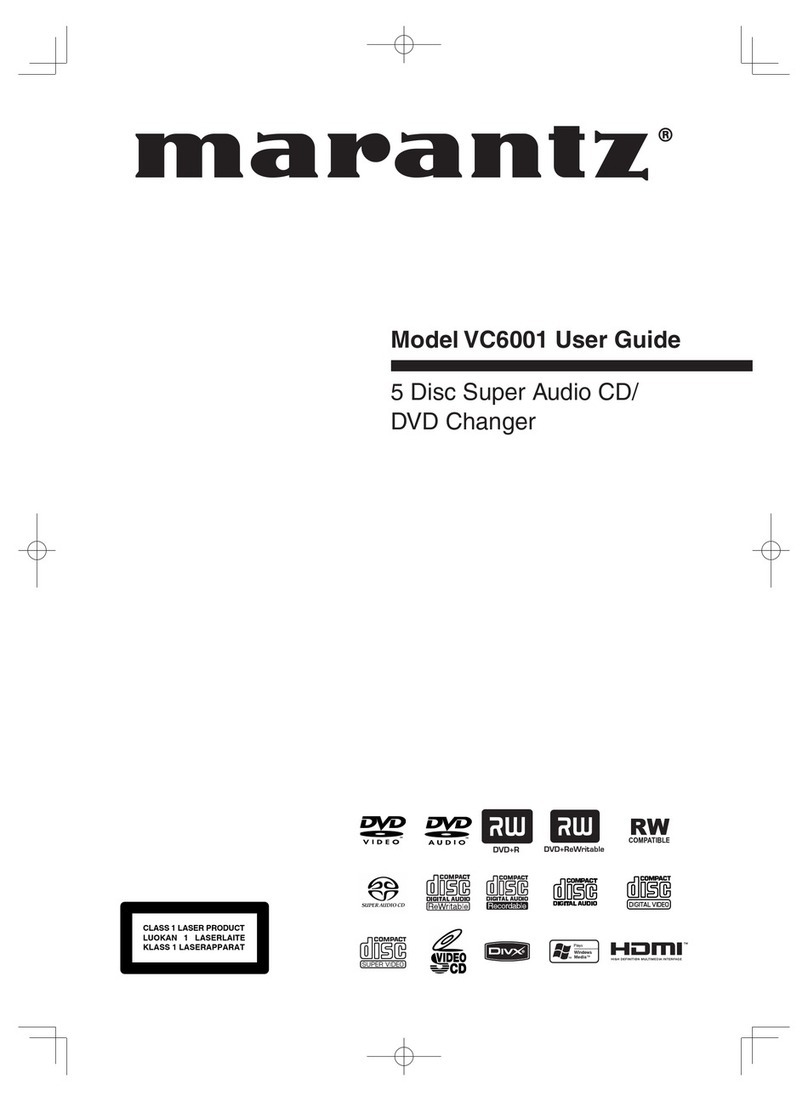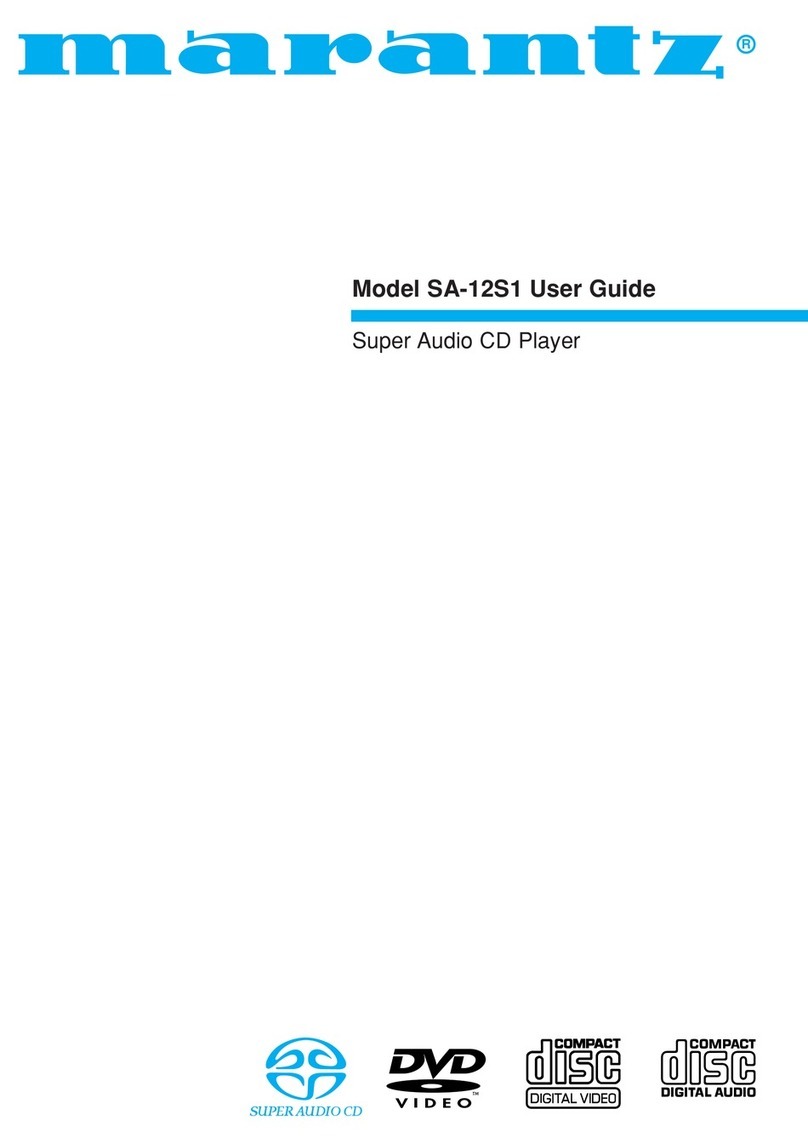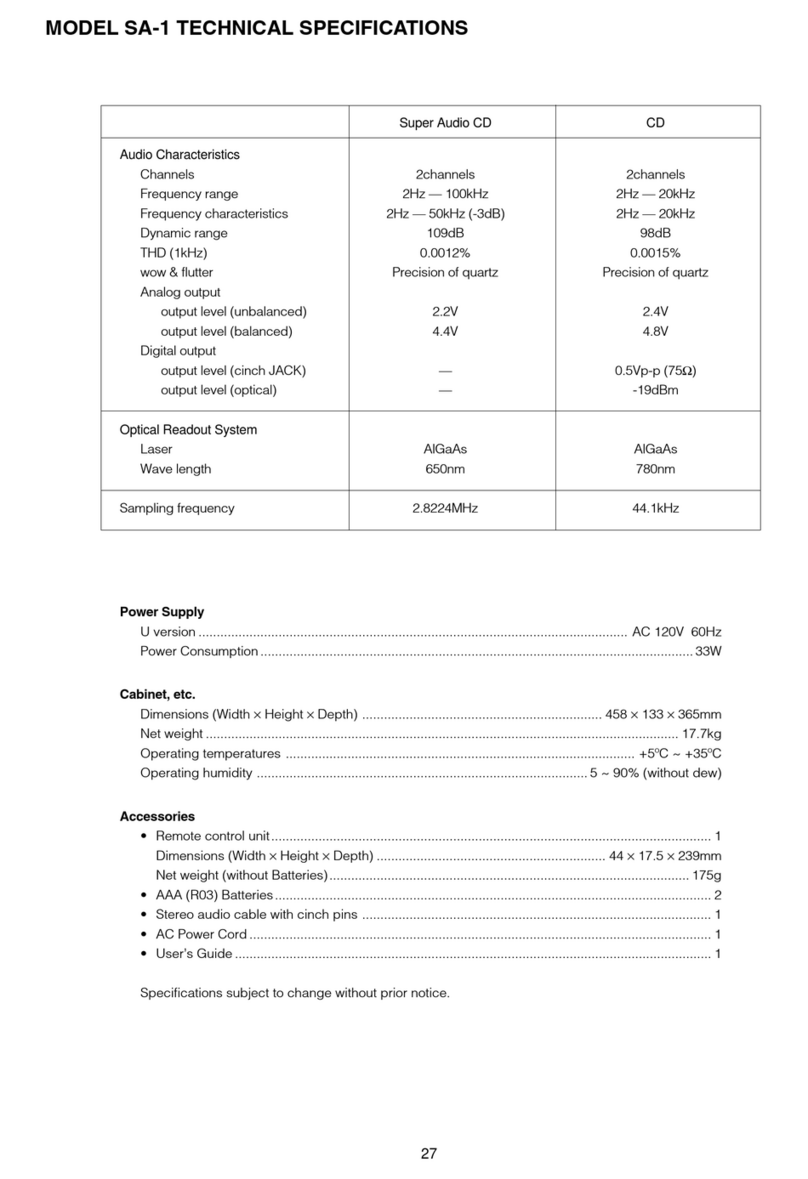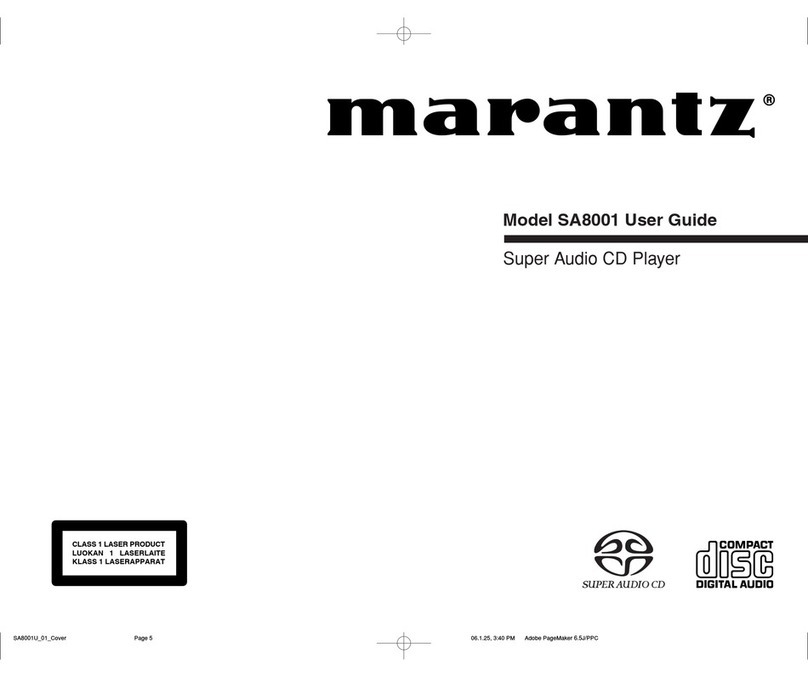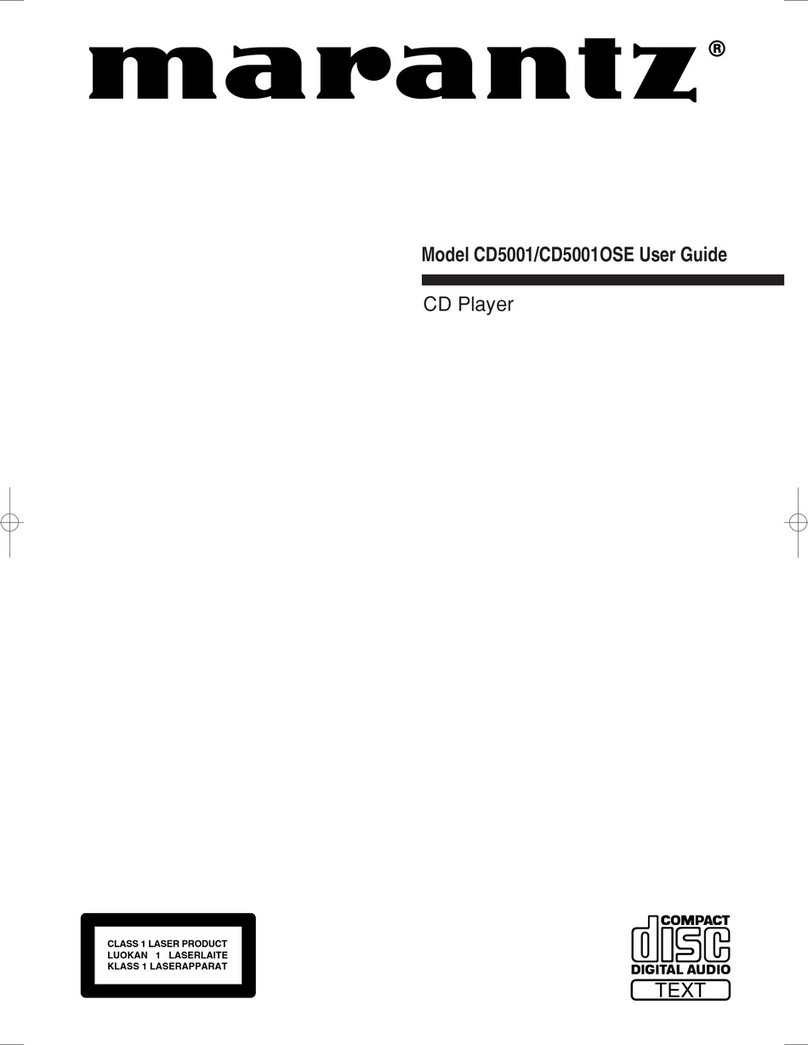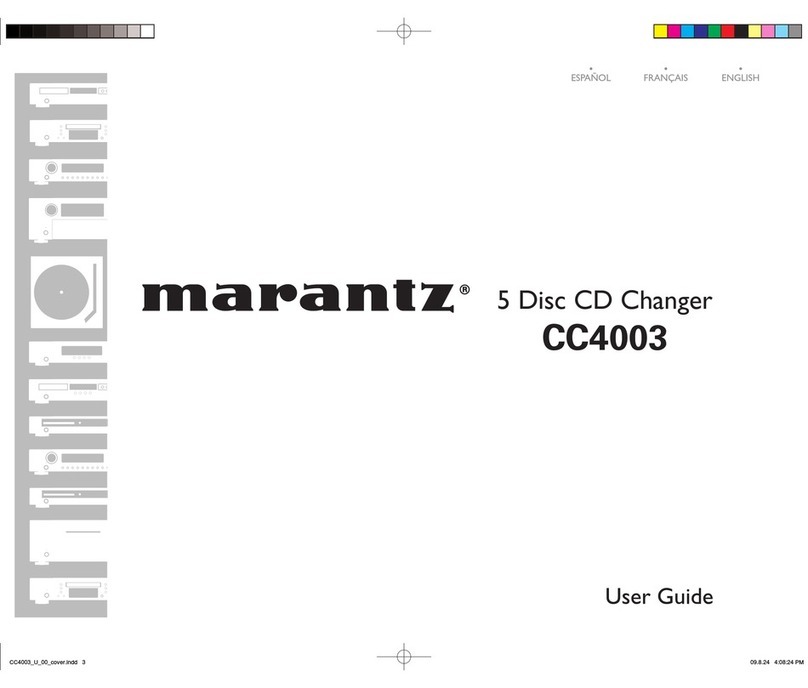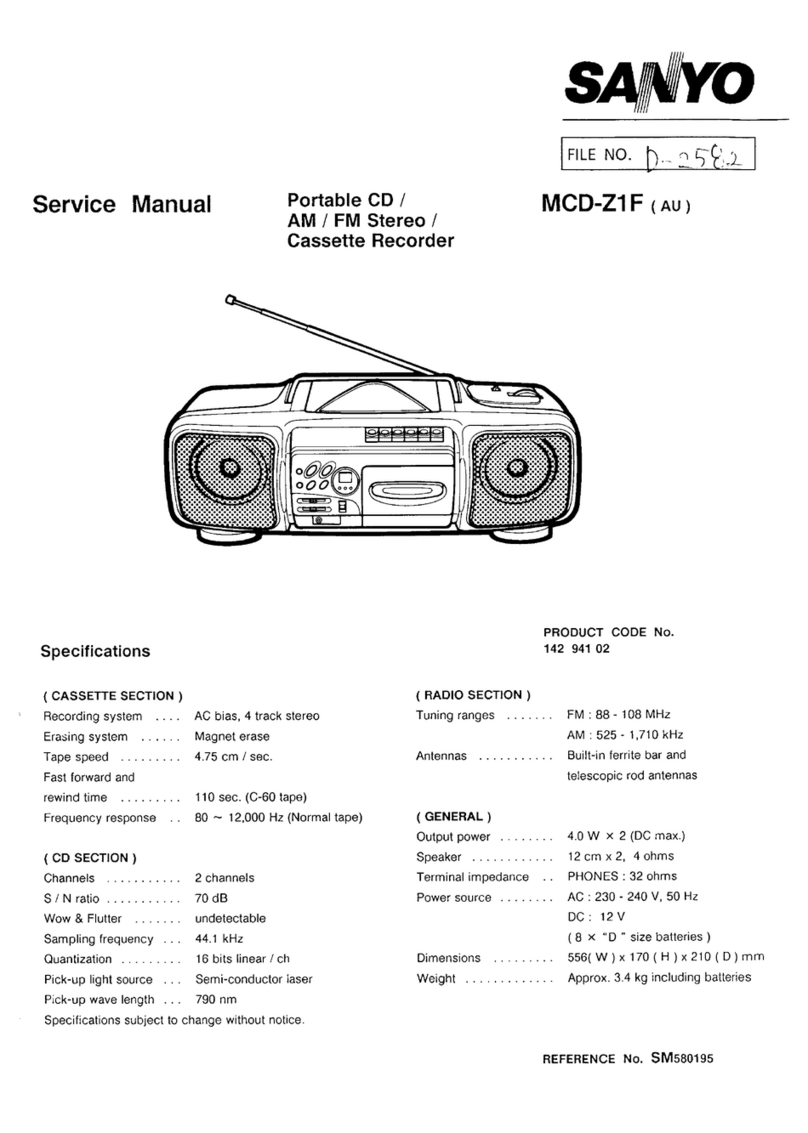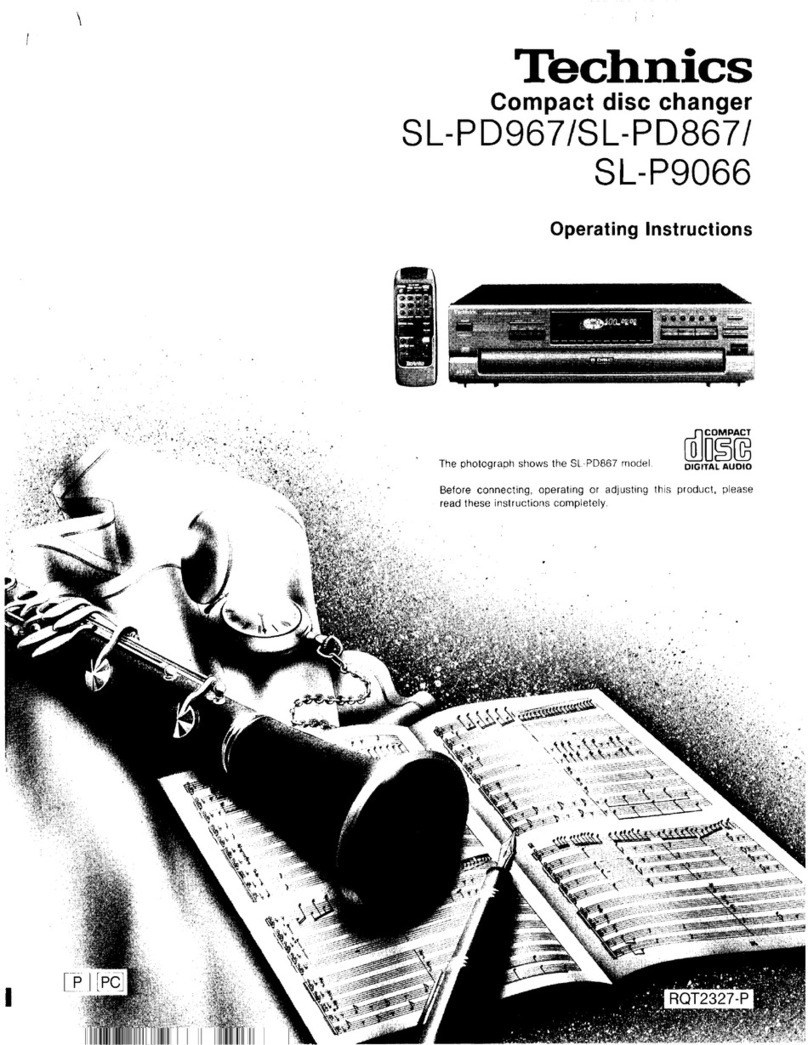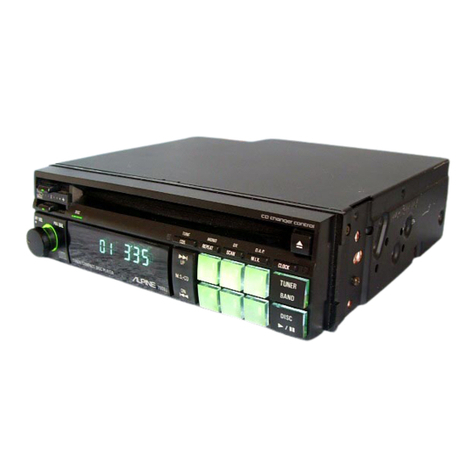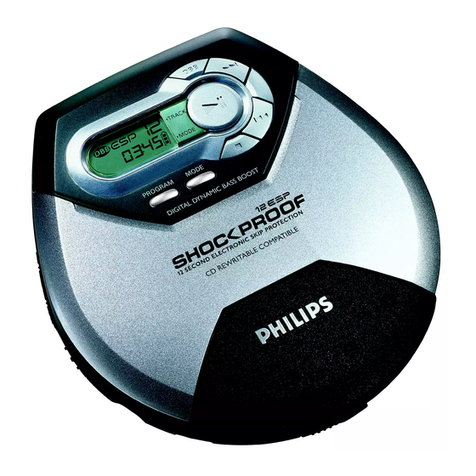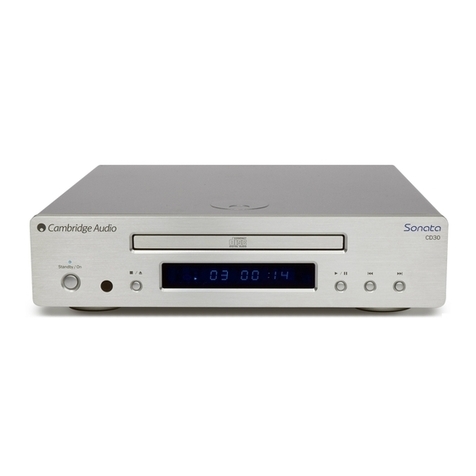ENGLISH
6
FEATURES
Super Audio CD multi-channel player
“Reproducing the acoustics of the concert hall in your own
room”
The Super Audio CD (SACD) multi-channel format is the
fulfillment of what audiophiles have dreamed of for many years.
Through a multiple number of speakers placed around the
listener, it enables sound to be reproduced with the authentic
acoustics of the hall or performers’stage with all the
impressions of its real-life dimensions.
“Conjuring up the acoustics of a concert hall within the
confines of the listening room”
The <SA-17S1> SACD multi-channel player enables you to
experience through the very fibers of your body the excellent
quality of the SACD multi-channel format.
Multi-channel audio circuits, complete with
current feedback HDAM and structured
identically for all 6 channels
Current feedback-type HDAMs (high-speed voltage
amplification modules which are the result of yet another
Marantz original breakthrough) are used for all six audio output
channels. The discretely configured current feedback
amplifier is also employed in the filter amplifier to help ensure
that the vast amounts of high-density music information
recorded on the SACDs are reproduced faithfully by wide-
band/high-speed circuit technology.
Copper plates have been added to the bases of the multi-
channel output connectors to achieve zero ground impedance
between the connectors.
As a result, the ground potential of all six channels is fixed in
one point, and authentic multi-channel acoustics are spirited
up with nothing withheld in this department.
SACD-DACs made by Cirrus Logic, Inc. featured
to ensure that the SACD and CD sound is
reproduced with a high sound quality
The player incorporates three CS4397 D/A converters (made
by Cirrus Logic, Inc.) developed for use with SACDs and CDs
to achieve full drive for all six channels.
•When an SACD is played
The DSD signals recorded on the SACD are directly
connected to the multi-element switched capacitors (24
elements) with low jitter characteristics in the last stage of
the CS4397 SACD D/A converters, and they are converted
into extremely accurate analog signals.
•When a conventional CD is played
The PCM signals recorded on the CD are processed by
128x oversampling inside the CS4397 SACD D/A
converters and, by means of a combination of the dynamic
element matching (DEM) and multi-element switched
capacitors, they are converted into very accurate analog
signals with a high linearity.
Mechanism module exclusively designed
for SACD/CD audio
The mechanism module developed by Marantz uses a circuit
board to reduce the noise generated from the digital circuits
to the lowest level possible, and its stable reproduction
capability ensures that SACDs and CDs are played with a
high sound quality.
Power supply circuit for high-quality SACD
play
•“Super ring”(toroidal transformer) used
The player features a powerful power supply section that
contains a “super ring”(toroidal transformer) with a high
efficiency and minimal leakage flux. Also featured is a
special power transformer for the display tube to yield a
stable power supply and shut out noise.
•Original audio-use capacitors adopted
Capacitors specially designed for audio applications with
a high sound quality and large capacity are used in the
power supply block. They were created through a process
of repeated prototype production and test listening
sessions.
They help to create the “Marantz sound”which is soft,
sophisticated and full of acoustic ambience.
Phantom center function makes its debut
If, when you intend to sit back and enjoy SACD multi-channel
discs, you cannot find a place for the center speaker because
of the conditions prevailing in the operating environment, the
sound field at the front will be extended to the left and right
and feel unnatural. If the player’s “phantom center function”
is used in a situation like this, the center channel sound will
be distributed to the front left and right channels, resulting in
the synthesis of a virtual center channel. In other words, the
function makes it possible to recreate a convincing sound
field that has almost the same superb acoustics as what would
be reproduced using the center speaker as well.
Headphone output with high sound quality
The headphone output circuit uses a discrete configuration
that incorporates a high-speed buffer amplifier with a high
drive capability. As a result, you can enjoy the pure sound
delivered by SACDs even through your headphones.
LPF (low-pass filter) selector switch provided
Using this LPF switch provided on the rear panel, you can
now select either the “CUSTOM”setting (wide-band play for
all channels) that fits the bill when listening to sound
reproduced by a system that supports SACDs or the
“STANDARD”setting when listening to the sound reproduced
by a conventional audio system.
Double-layered chassis
The chassis is made of copper-plated steel sheets, and 3.2
mm thick steel sheets (weighing 3.2 kg) are used for the
bottom chassis with its double-layered construction. It anchors
the SACD mechanism firmly in place and eliminates all
vibration. It helps to reproduce a clear sound free from
indistinctness.
DISPLAY OFF function
This function slashes the amount of noise emanating from the
fluorescent display tube and ensures that it does not affect
the reproduced sound.
SACD/CD TEXT display function
This displays the TEXT information that is provided on SACD
and CD discs.
